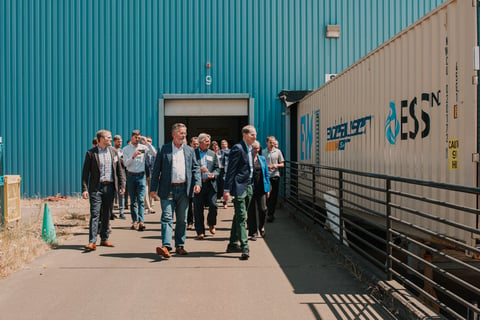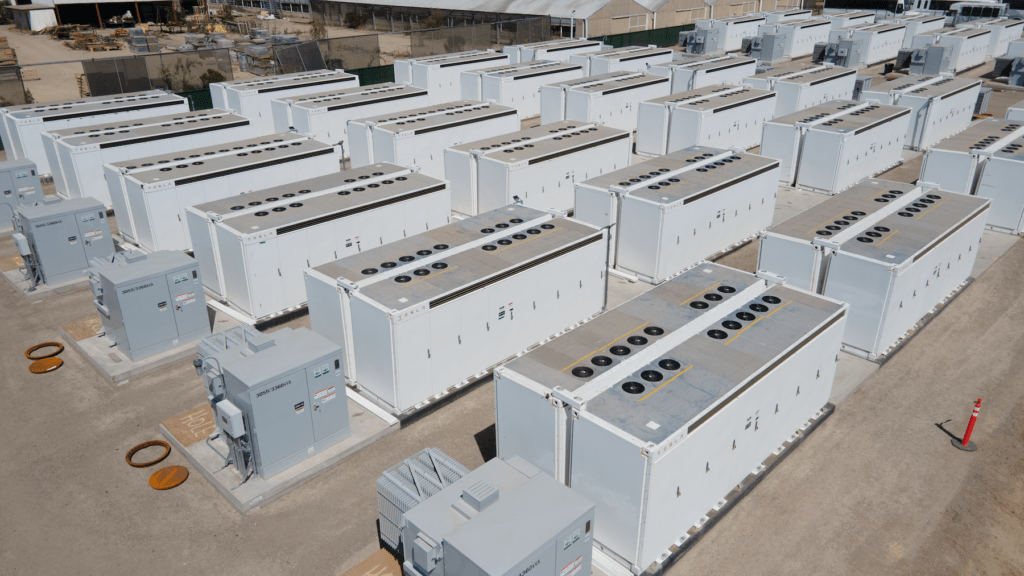
“President Biden entered office with a pledge to build a new economy powered by clean energy—one that lowers costs for American families, creates good-paying jobs for American workers, and increases our energy independence,” US Secretary of Energy Jennifer Granholm said a few days ago.
“Thanks to the Senate’s passage of the Inflation Reduction Act of 2022, the Biden-Harris administration is on the cusp of delivering on that pledge.”
Enjoy 12 months of exclusive analysis
- Regular insight and analysis of the industry’s biggest developments
- In-depth interviews with the industry’s leading figures
- Annual digital subscription to the PV Tech Power journal
- Discounts on Solar Media’s portfolio of events, in-person and virtual
It’s been a rollercoaster couple of weeks for US clean energy, an industry that’s used to rollercoaster-like ups and downs in policy and market dynamics.
We’ve heard the rhetoric from Granholm and Biden, we’ve heard that the Inflation Reduction Act will make the US’ biggest-ever investment into fighting the climate crisis and enhancing energy security.
Looking from an energy storage perspective, among a package of funding totaling US$369 billion for clean energy, the act contains major supply-side and demand-side drivers: the investment tax credit (ITC) for standalone energy storage on the demand side, and support for domestic manufacturing and supply chains for batteries on the supply side.
Morten Lund, an energy and infrastructure lawyer from US firm Stoel Rives, from whom we now hear views on how the act’s stimulus levers may – or may not work – is by his own admission a policy skeptic. He tells us the legislation looks promising, but expresses cynicism that it can pass quickly, after the Build Back Better act floundered and spluttered to a halt before it.
We speak a day or two before the Senate unexpectedly passes the act, preparing it for a potential quick stop tour through the House and then onto the desk of a president eager to sign it and get it done. So, it would be remiss of us to not mention that the day after Vice President Kamala Harris cast the deciding vote and broke a deadlock to pass the vote, Lund emails us again.
“…the Senate quickly proved me wrong this weekend. Very exciting!”
Earlier this week, we published a short extract from the following interview, where Morten Lund explained how introducing a standalone energy storage ITC could eat away at the dominance of solar-plus-storage hybrid plants, something the Stoel Rives partner welcomes.
Here is some of the rest of his take on the Inflation Reduction Act, at least as far as it pertains to energy storage deployment.
Inflation Reduction Act ‘would almost certainly’ kickstart the storage rush
The relevant provisions in the act are “almost the same” as the Build Back Better (BBB) act from nine months ago, yet this time West Virginia Senator Joe Manchin, the effective vetoing voice on BBB, is on board.
There are some important differences however, Lund says, which we’ll go into a little later, but in short, there’s been an effort to break up BBB into smaller pieces and pass them one-by-one and make them attractive enough to appeal across a broad political spectrum, and the IRA is one of those.
Either way, the IRA in its current form could provide a stimulus that energy storage is in need of to an extent that wind and solar PV deployment – which is “going gangbusters,” at the moment in the US – are not.
“While this [legislation] would provide a boon for some sectors, in some locations, it’s not as if solar and wind are on pause waiting for this bill to come in. Storage is a little more complex. We’re still struggling to get the storage industry really off the ground in the United States. But this bill would almost certainly do it.
“There’s an issue with lithium pricing, but as a general proposition, the level of incentives they are talking about is the right kind and the right amount to make this work, in concept.”
Many developers that Stoel Rives works with are semi-speculatively signing up lease options on suitable land where their energy storage projects could go. That’s the first and easiest step in project development and storage requires far less land than wind or solar.
If the real estate is in the right place, close to a grid substation, it will more likely than not be able to provide valuable services to utilities in that area.
If the act is passed and the ITC with it, bringing a reduction of about 30% to the capital cost of equipment, that could increase the viability of storage to the point that many of those developers will be able to offer grid services to utilities at attractive prices. That will trigger the developers making purchases of land and going ahead with their projects.

With great tax provisions come great complexities
The ITC will undoubtedly accelerate the development of energy storage, Lund says, but one thing that stands out on early readings of the bill, is that the provisions and eligibility requirements proposed are complicated.
It’s “somewhat confusing,” and puts developers and investors into a kind of holding pattern, that they won’t be able to break out of until they have more certainty.
“By some readings, you can get a 60% ITC for some projects. That’s a lot of money. And that’s enough money to make people completely redesigne a business plan, but you can’t until you know how this works. Doubtlessly many projects will just proceed ahead, a 30% ITC is very, very nice. But many projects will be stuck in a holding pattern until we get clarity on what those rules are,” Lund says.
“Because nobody wants to go ahead and try for a four-year 60% ITC and find out we got the rules wrong halfway through our development effort. It’s a good thing, but it’s crippled into helplessness until the contradictions are sorted out.”
One key difference from BBB is that the earlier attempted legislation added a direct-pay option to the ITC, meaning “you could just take it out as cash,” whereas in the IRA, it’s “kind of, sort of, cashable”.
In the IRA, direct-pay only applies for municipal and non-taxpaying entities. So for example, the Harvard endowment has been a prolific investor in wind and solar, but as a non-tax entity, it’s role has been limited. That will be very interesting for Harvard endowment and others to be able to come into the market as a tax equity, but it doesn’t solve problems for the wider market that a cashable ITC would solve.
“Because of the way the ITC works, the tax rate on a solar or storage project is too big for you to be able to use it on the strength of the project itself. The project itself does not pay enough income to utilise its own tax credit.”
This means that smaller developers, which rarely have other income streams, are forced into third-party financing. This “grand irony” of the ITC presents a “significant inefficiency” in the market, albeit one that Lund himself as a lawyer profits from, through the increased number of transactions necessary.
While being able to sell the tax credit to a third party is still preferable to having no tax credit, it’s still a system that’s unnecessarily complicated versus a cashable ITC, he argues.
Lund says he doesn’t know what the motivations were for changing that up from BBB, but his hunch is that it’s to do with the last group of people still excluded from eligibility for tax incentives – foreign investors.
For solar, that means China, and for storage that means South Korea, Japan and China – East Asia basically. And the lawyer doesn’t believe there is any great animosity between the US and South Korea and Japan, but while relations with China remain frosty despite the clean energy industry’s dependence on the latter, the Inflation Reduction Act locks out that foreign investment in a way that BBB did not.
“It’s speculation on my part, but that’s the only conclusion I can come to, that the policy was driven specifically by desire to not seem like they’re just giving something to China.”
A very American climate bill
Despite the excitement and the many positives of the Inflation Reduction Act, Morten Lund confesses to some disappointments with it, and recognises that there will likely be some limitations to its transformative impact.
Perhaps the more minor of these is a missed opportunity: the US Federal government, as one of the world’s single largest, if not the largest, customers of energy, could “really quickly and effectively make a change” by committing to being a customer of clean energy technologies.
“If the US government just declared one day, we’re only going to buy electric cars from here on out, that would instantly, tenfold the electric car market overnight,” Lund says.
“I don’t think that was ever going to happen, but I was really hoping for some fairly aggressive market-based, government-as-customer response – and it’s in there, but it’s like a few hundred million dollars, less than a billion for one agency to make their buildings greener.”
The other thing is that, as a European (Lund is from Norway, although has been working in the US energy sector for more than two decades), the lawyer’s reading is that the IRA is the “most American climate bill you can imagine”.
What he means by that is that the bill seeks to incentivise clean energy with tax credits, but doesn’t introduce any mandates, which Lund sees as the best and fastest way to accelerate energy storage adoption.
The Inflation Reduction Act, he says, is “all carrot and no stick”.
“It doesn’t actually require anything at all. It has no mandate to speak of. And the carrots, in my experience, are very unscientific. Look to the tariffs, the various China, Taiwan tariffs, which have accomplished virtually nothing other than raise the prices for American consumers.”
While the ITC helped drive solar to a tipping point in the US, Lund would argue that what really turned solar into a mainstream part of the energy industry was that more than half of all the US states had in place Renewable Portfolio Standards (RPS) that mandated utility procurement of renewables.
Even in California, which is one of the US’ 10 states with an energy storage target or mandate policy in place, the mandated procurements were so small that utilities surpassed them ahead of time.
Instead, what’s driving California into a leading position in US energy storage is mandates for solar PV and wind, which dictate ultimately that to integrate those renewables to the grid, you need storage.
“I’m disappointed, because it’s all just economic incentives, which only work if they work, and we don’t know if they will. If the government had taken the more European approach to it and said, henceforth, three quarters of cars sold must be electric, or that nobody’s allowed to build any more coal plants ever, we have to put batteries in instead, then we would have to have batteries and we would have to have batteries made in United States.”

